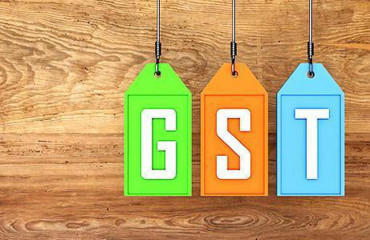
Steps For e-Invoicing
A. Introduction:
‘e-Invoicing’ means reporting details of specified GST documents to a Government-notified portal i.e., Invoice Registration Portal (IRP) and obtaining an invoice reference number. It doesn’t mean the generation of invoices by a Government portal.
Steps For e-Invoicing
A. Introduction:
'e-Invoicing' means reporting details of specified GST documents to a Government-notified portal i.e., Invoice Registration Portal (IRP) and obtaining an invoice reference number. It doesn't mean the generation of invoices by a Government portal.
In e-invoicing, taxpayers continue to create their GST invoices on their own Accounting/Billing/ERP Systems. These invoices are reported to any of the six authorized 'Invoice Registration Portals (IRPs)' in a standard format (called 'Schema' & notified as Form GST INV-1) and generating Invoice Reference Numbers (IRN) on any of these portals is free of charge.
B. To whom applicable/ who is eligible for e-Invoicing
Taxpayers whose aggregate turnover exceeds the notified limits (based on PAN) in any preceding financial year (since 2017-18) (as per the relevant notification) are required to comply with the e-invoicing regulations. Currently, the notified aggregate turnover is 5 crore and above is applicable from 1st August 2023.
C. Exemption from e-Invoice:
Certain taxpayers or entities are exempted from e-invoice reporting as per relevant notifications. Please refer to the respective notifications for detailed information.
D. Which documents/supplies covered:
GST invoices, Credit Notes and Debit Notes in respect of B2B Supplies, Supplies to SEZs (with and without payment), Exports (with and without payment) and Deemed Exports.
E. Process of e-Invoice:
i. Taxpayers will continue to create their GST invoices on their own Accounting/Billing/ERP Systems.
ii. These invoices will be reported to any of the six authorized 'Invoice Registration Portals (IRPs)'.
iii. On reporting, IRP returns a signed e-Invoice with a unique 'Invoice Reference Number (IRN)' along with a QR Code.
iv. Then, the Invoice (with QR Code) can be issued to the receiver. A GST invoice for B2B transaction will be valid only with a valid IRN
F. Steps for E-invoice Reporting:
Step 1: Enablement for e-Invoicing:
i. All taxpayers who are eligible for the e-Invoicing, as per the Government notifications are automatically enabled for reporting of e-Invoices on any of the six authorized IRP portals.
ii. The enablement status can be checked at https://einvoice.gst.gov.in .
iii. If an eligible taxpayer is not enabled for e-Invoice, they can get self-enabled at https://einvoice.gst.gov.in .
iv. Please note that the enablement status on the e-Invoice portal doesn't automatically mean that a taxpayer is legally obligated to do e-Invoicing. The 'enablement' is primarily to ensure only the taxpayers having notified turnover limits are able to register and test/report invoices on IRPs.
Step 2: Register on any of the six Invoice Registration Portals:
The Invoice Registration Portal (IRP) is the website for uploading/reporting invoices by the notified persons. Currently, six IRP portals have been notified for reporting the invoice. These six active Invoice Registration Portals (IRPs) offer services for reporting e-Invoices and generating Invoice Reference Numbers (IRN), free of charge.
The list of authorized portals is as follows:
https://einvoice1.gst.gov.in https://einvoice4.gst.gov.in
https://einvoice2.gst.gov.in https://einvoice5.gst.gov.in
https://einvoice3.gst.gov.in https://einvoice6.gst.gov.in
Enabled taxpayers must register on any of the six IRPs before they can start reporting e-invoices. This onboarding process involves a one-time verification of the taxpayer's registered mobile number and email through an OTP.
Upon successful validation, login credentials for the IRP portal are created, and the taxpayer is ready to report e-invoices.
Step 3 & 4: Reporting and Auto-population of e-Invoice:
i. To receive an Invoice Reference Number (IRN) for their e-Invoices, taxpayers must report the data of e-invoices on the IRP portal using the predefined INV-01 schema in a JSON format.
ii. Most IRPs provide functionalities for reporting e-Invoices via offline tool, online web tool, Mobile App and API-based methods.
iii. The schema and the portal have built-in validations to prevent duplicate reporting and other checks.
iv. Upon successful validation, a signed e-invoice, carrying a unique IRN and a QR code, is returned to the taxpayer.
v. A copy of this invoice is then shared with the GST system for auto-population in the supplier's GSTR-1 return.
vi. Issue e-Invoice with IRN details to buyer.
G. e-Invoice Verification:
To verify the IRN of an e-Invoice, taxpayers have multiple options.
i. First, taxpayers can utilize the GSTN e-Invoice QR Code Verifier app, which is available on the Google Play / App Store, to verify e-invoices reported on any of the IRPs.
ii. Alternatively, taxpayers can use the "Search IRN" functionality available at: https://einvoice.gst.gov.in/einvoice/search-irn
H. e-Invoice Master FO Portal:
i. As the number of IRP portals has increased to six, GSTN has developed a comprehensive e-Invoice master information portal, which can be accessed at https://einvoice.gst.gov.in.
ii. This portal serves as a one-stop resource for all e-Invoicing related information. It offers access to master codes, the ability to check enablement status, search IRN functionality, information about all the IRPs along with links to their respective portals, the e-invoice schema, and more.
iii. In the near future, this portal is also expected to provide the functionality to download e-Invoices.
Disclaimer: The information provided above is intended for guidance and support purposes only. Taxpayers are advised to refer to the relevant sections of the GST Act and Rules for legal definitions and interpretation. The content shared does not constitute legal advice. Users are responsible for ensuring compliance with applicable laws and regulations.
